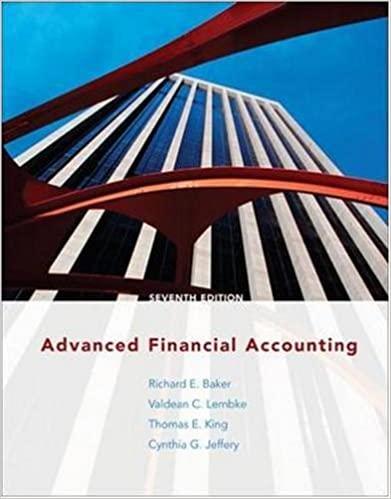Question
Ellix Company manufactures two models of ultra-high fidelity speakers, the X200 model and the X99 model. Data regarding the two products follow: Product Direct Labor-Hours
| Ellix Company manufactures two models of ultra-high fidelity speakers, the X200 model and the X99 model. Data regarding the two products follow: |
| Product | Direct Labor-Hours | Annual Production | Total Direct Labor-Hours |
| X200 | 0.4 DLH per unit | 20,000 units | 8,000 DLHs |
| X99 | 0.6 DLH per unit | 38,000 units | 22,800 DLHs |
| 30,800 DLHs | |||
| Additional information about the company follows: | |
| a. | Model X200 requires $39 in direct materials per unit, and model X99 requires $31. |
| b. | The direct labor rate is $40 per hour. |
| c. | The company has always used direct labor-hours as the base for applying manufacturing overhead cost to products. |
| d. | Model X200 is more complex to manufacture than model X99 and requires the use of special equipment. |
| e. | Because of the special work required in (d) above, the company is considering the use of activity-based absorption costing to apply manufacturing overhead cost to products. Three activity cost pools have been identified as follows: |
|
Estimated Total Activity | ||||||
| Activity Cost Pool | Activity Measure | Estimated Total Cost | X200 | X99 | Total | |
| Machine setups | Number of setups | $ | 144,900 | 84 | 126 | 210 |
| Special processing | Machine-hours | 378,000 | 1,050 | 0 | 1,050 | |
| General factory | Direct labor-hours | 1,232,000 | 8,000 | 22,800 | 30,800 | |
| $ | 1,754,900 | |||||
| Required: | |
| 1. | Assume that the company continues to use direct labor-hours as the base for applying overhead cost to products. |
| a. | Compute the predetermined overhead rate. (Round "pre-determined overhead rate" to nearest dollar.) |
| b. | Compute the unit product cost of each model. (Round "pre-determined overhead rate" to nearest dollar and round other intermediate calculations and final answers to 2 decimal places.) |
| 2. | Assume that the company decides to use activity-based absorption costing to apply overhead cost to products. | |
| a. | Compute the activity rate for each activity cost pool and determine the amount of overhead cost that would be applied to each model using the activity-based approach. (Round "Overhead cost per unit" answers to 2 decimal places.) |
| b. | Compute the unit product cost of each model. (Round intermediate calculations and final answers to 2 decimal places.)\ |
Step by Step Solution
There are 3 Steps involved in it
Step: 1

Get Instant Access to Expert-Tailored Solutions
See step-by-step solutions with expert insights and AI powered tools for academic success
Step: 2

Step: 3

Ace Your Homework with AI
Get the answers you need in no time with our AI-driven, step-by-step assistance
Get Started


